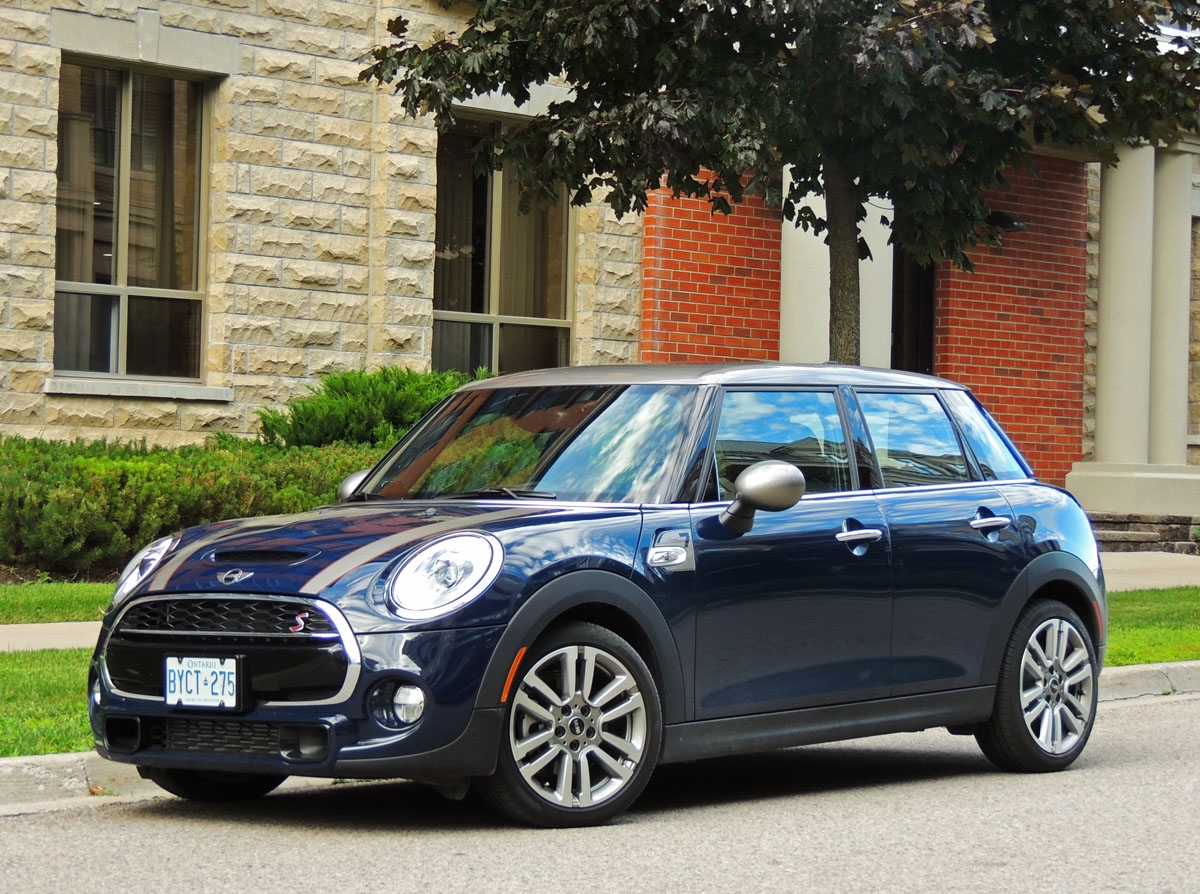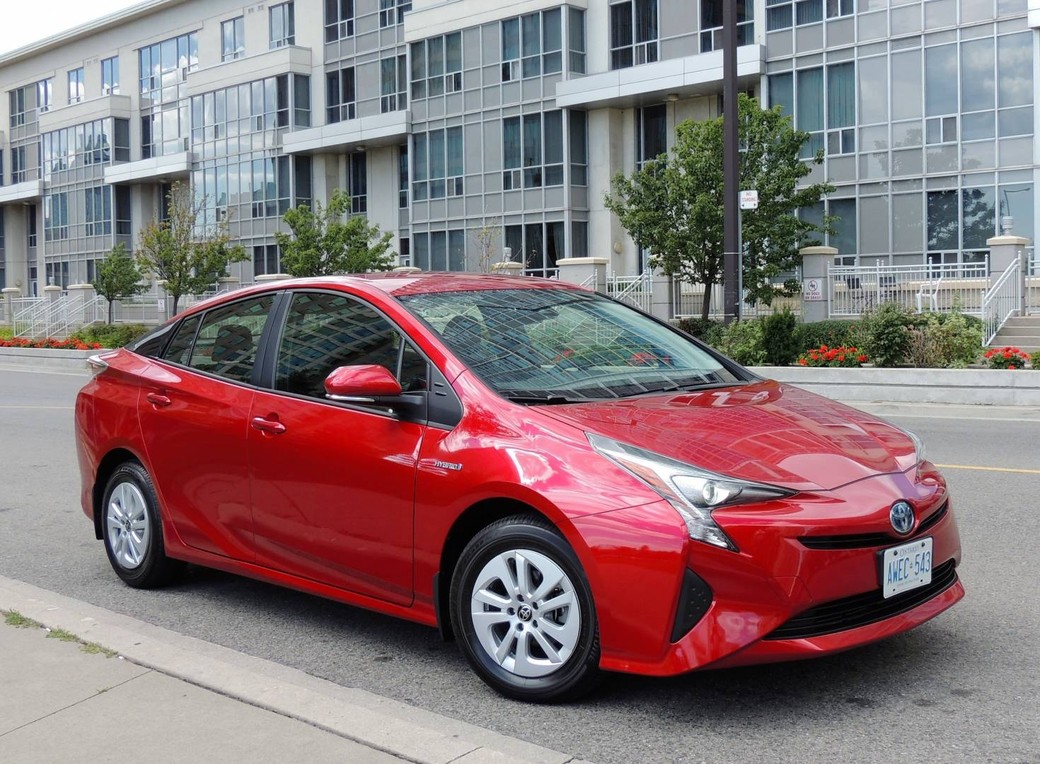
This Mini offers ‘go-kart’ handling and room for four
Photos by Neil Moore / Feature photo: Although significantly larger than the original pop culture icon, today’s 5-door Mini retains its cuteness, character and go-kart-like handling.
In today’s world of Mini, there are five major ways to order one: 3-door, 5-door, Clubman, Convertible and Countryman. And several trim levels within each.
That’s not to say there’s a Mini for every purpose and budget, but at least they’ve landed upon variants that serve more than just a tiny demographic, with little need for rear passengers or cargo room.
And that’s after eliminating some interesting experiments like the two-door crossover Paceman, two-seat Coupe and Roadster.
Indeed, today’s Mini lineup spans tiny to compact. From the two-door convertible, to the less tiny Clubman and even more voluminous Countryman crossover.
My tester – the Cooper S 5-door – falls somewhere in the middle, and is an excellent compromise for those wanting Mini’s legendary ‘go-kart-like’ handling, along with some ability to carry passengers and cargo.
Although your passengers better not be six-footers.
Today’s Mini may be roughly three feet longer than the original and a foot wider, with the current 5-door having nearly seven inches on its 3-door sibling, but only the modestly-proportioned will be happy in its rear quarters. With the driver’s seat positioned for my five-foot-nine frame, there was just enough leg room for me to sit in behind.
Cargo is another matter. Pop the rear hatch for 278 litres of space – enough for a load of groceries. That grows to a flatscreen TV-swallowing 941 litres with the 60/40 seatbacks dropped. The 3-door compares at 211/731 litres.
Mini engineers have managed to carve out a surprising amount of room from a small footprint, aided by a generous 2,567 mm wheelbase. Which means wheels are pushed to the corners, contributing to its agility.
The Mini Cooper 5-door starts at $23,240, and the Cooper “S” 5-door at $27,490 (prices are $23,490 and $27,790 for 2018). The major difference is in the powertrain, which for the Cooper is a 1.5-litre, twin-turbo three-cylinder that delivers 134 hp and 162 lb/ft of torque from 1,250 rpm.
It’s not a pocket rocket, with zero to 100 km/h taking just over eight seconds. But it’s fun to drive in the same vein as MX-5 and other nimble rides that rely more on handling than raw power to get the adrenaline flowing.

My tester was the Cooper S, which benefits from a more potent 2.0-litre, twin-turbo four cylinder that delivers 189 hp and 207 lb/ft of torque, also from a low 1,250 rpm. Both cars come standard with a six-speed manual transmission and optional six-speed automatic.
Mine included the $1,400 automatic. I realize that choosing one’s own gears is a dying art, nonetheless I’d save the dough and take the six-speed manual any time. Especially in a car like this – even though the manual gearbox is rated at one-tenth slower in the zero to 100 km/h sprint (6.9 seconds vs 6.8).
Aiding the autobox are three drive modes, which remap the transmission and throttle either for fuel economy or performance. These modes also light up an LED ring around the infotainment screen: red for Sport (with the message “Let’s Motor Hard”), yellow for Mid mode (“Let’s Motor”) and green (Let’s MINImalize!).

Make no mistake, there are noticeable differences between all, with Green mode providing gentle acceleration and earlier shifts. Sport mode was my default, with significantly quicker throttle, later shifts and a series of burbles and pops from the centre-mounted dual exhausts when you lift off the accelerator – in particular when in manual shift mode.
I’m not usually a fan of amping up an already steep sticker price with even more expensive options, but the Seven Edition package ($2,400) would be my exception. It pays tribute to the original 1959 Austin Seven, with unique bonnet stripes, and other cool design elements like silver roof and mirror caps.
Also included are big 17-inch alloys, and on the inside, piano black and malt brown soft touch on the doors and dash, and cloth/leather seats with a nice tartan fabric on the side bolsters.
My vehicle also had the $1,200 Loaded Package, which includes Dynamic Damper Controls – allowing you to customize shock stiffness. It works nicely with the Mini’s tightly-tuned multi-link rear suspension and low centre of gravity to boost its already stellar corner-carving ability.
Also part of the package are keyless entry, auto dimming interior mirror and automatic climate control.
Inside, Mini continues to offer premium fittings, like the switchgear that comprises two rows of toggles. One is below the centre stack, with a red toggle to start the vehicle, and another overhead to handle items like lighting and sunroof.
Regarding the latter, the panoramic glass roof, which covers both rows of seating, is part of the $1,300 Essentials package. I like how it visually expands the interior, but it does create a summer sauna. I kept its shade drawn much of the week.
With BMW’s retro take on the Mini, it’s no surprise they’ve continued with old-school analog gauges above the steering wheel – tach on the left, speedo on the right. And the large, rotary knobs for climate control are more efficient than muddling through a series of menus and submenus.
On that note, Mini’s “Connected” infotainment system, standard with 6.5-inch display or optional 8.8-inch (as part of the $1,000 Wired Navigation package) is reasonably intuitive. It’s tilt/rotary controller and adjacent buttons manage radio, 3-D navigation, media, and other functions.
Add it all up, and one might question the relatively high cost of a Mini. Fair point, but keep in mind that small vehicles aren’t necessarily about thrift – even though my fuel consumption of just over 8L/100 km (mostly in Sport mode) is still fairly thrifty. What you’re really buying is a premium ride that looks sharp, has loads of character, and is a blast to drive.
If you’re a hockey family with gangly teenagers and bags of gear, the five-door Mini is not for you. But if you’re like me, riding solo much of the time, it may be all you need. At least as a second car.
But if you do go that route, good luck telling your partner he or she gets the minivan…

SNAPSHOT: MINI COOPER S 5-DOOR 2017
BODY STYLE: Subcompact hatchback
ENGINE: as tested – 2.0-litre twin-turbocharged four cylinder (189 hp, 207 lb/ft)
DRIVE: FWD; six-speed manual, or (as tested) six-speed automatic with manual shift mode
FUEL ECONOMY: ratings N/A, as tested (mostly in sport mode) 8.2L/100km
CARGO: 278 litres behind back seats; 941 litres with seats folded
PRICING: base 5-door $27,490 ($27,790 for 2018). Seven Edition ($2,400), Essentials Package ($1,300), Loaded Package ($1,200), LED Lights Package ($1,150), Wired Navigation Package ($1,000), six-speed automatic ($1,400). Other standalone options, freight and taxes extra.
WEBSITE: mini.ca









